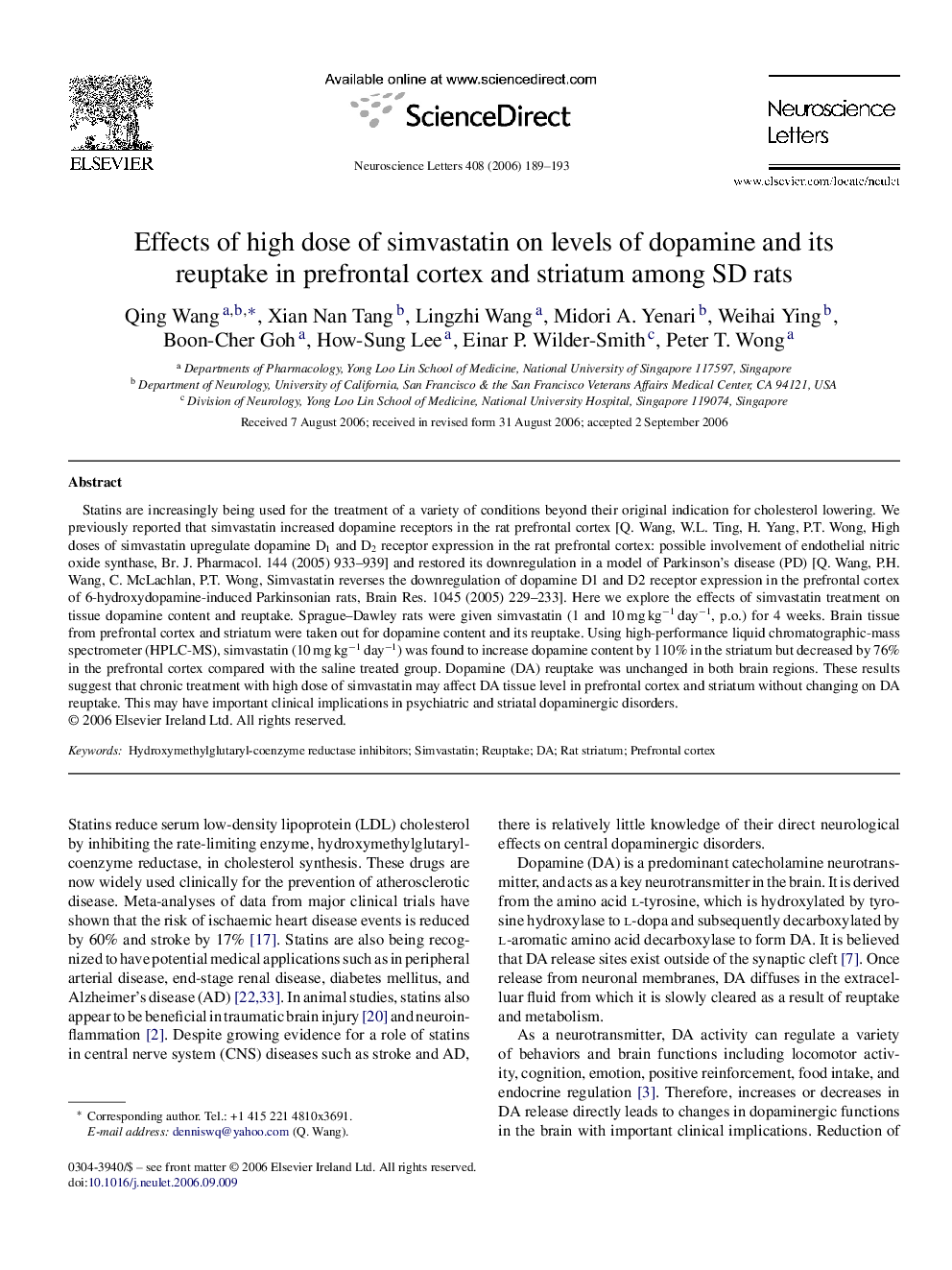| Article ID | Journal | Published Year | Pages | File Type |
|---|---|---|---|---|
| 4349995 | Neuroscience Letters | 2006 | 5 Pages |
Statins are increasingly being used for the treatment of a variety of conditions beyond their original indication for cholesterol lowering. We previously reported that simvastatin increased dopamine receptors in the rat prefrontal cortex [Q. Wang, W.L. Ting, H. Yang, P.T. Wong, High doses of simvastatin upregulate dopamine D1 and D2 receptor expression in the rat prefrontal cortex: possible involvement of endothelial nitric oxide synthase, Br. J. Pharmacol. 144 (2005) 933–939] and restored its downregulation in a model of Parkinson's disease (PD) [Q. Wang, P.H. Wang, C. McLachlan, P.T. Wong, Simvastatin reverses the downregulation of dopamine D1 and D2 receptor expression in the prefrontal cortex of 6-hydroxydopamine-induced Parkinsonian rats, Brain Res. 1045 (2005) 229–233]. Here we explore the effects of simvastatin treatment on tissue dopamine content and reuptake. Sprague–Dawley rats were given simvastatin (1 and 10 mg kg−1 day−1, p.o.) for 4 weeks. Brain tissue from prefrontal cortex and striatum were taken out for dopamine content and its reuptake. Using high-performance liquid chromatographic-mass spectrometer (HPLC-MS), simvastatin (10 mg kg−1 day−1) was found to increase dopamine content by 110% in the striatum but decreased by 76% in the prefrontal cortex compared with the saline treated group. Dopamine (DA) reuptake was unchanged in both brain regions. These results suggest that chronic treatment with high dose of simvastatin may affect DA tissue level in prefrontal cortex and striatum without changing on DA reuptake. This may have important clinical implications in psychiatric and striatal dopaminergic disorders.
